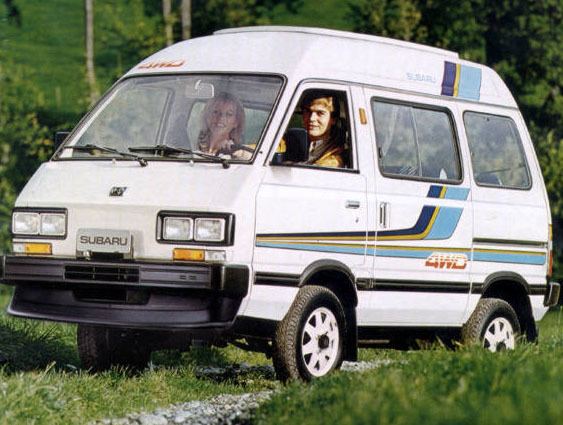Manufacturer Subaru | Production 1983–1998 | |
 | ||
Also called Subaru SambarSubaru LiberoSubaru DomingoSubaru Columbuss (Sweden)Subaru E seriesSubaru Estratto (Taiwan) Layout Rear-engine, rear-wheel drive / four-wheel drive | ||
The Subaru Sumo, known as the Libero in European markets except the UK, Norway, and Sweden, and as the Domingo in the Japanese market, was a microvan produced from 1983 to 1998. In Sweden, it was known as the Columbuss (buss means bus in Swedish), and in Taiwan the latter generation was marketed as the Estratto. It was also called the Subaru E10 and Subaru E12 respectively in some places, the names referring to the size of the engines. The Sumo shared many characteristics with the Sambar, except it had extended front and rear bumpers and a larger engine borrowed from the Subaru Justy. Because of these modifications, it didn't conform to kei car regulations, which stipulate the maximum dimensions of the vehicle and the maximum engine displacement requirements, which then determine the vehicle tax to be paid.
It was launched with the option of four-wheel drive and powered by 1.0- and 1.2-litre 3-cylinder EF engines based on those used in the Subaru Justy although in the van they were rear mounted. Somewhat unusual for a microvan, the 1,200 cc Sumo could be ordered with selectable 4WD, operated via a gear stick mounted button. In normal driving conditions, only the rear wheels were driven, as there was no central differential to allow highway driving in 4WD mode. In 1994, Subaru's Full Time 4WD (S-AWD) was added to the options list with the ECVT transmission only and a viscous coupling. An oil cooler was installed on European versions to better facilitate light duty towing.
The Sumo was discontinued when the sixth generation Sambar was introduced, and the market that the Sumo was targeted at was refocused towards the Subaru Forester, which, in comparison to the Sumo, had permanent 4WD, a more potent 2.5 L boxer engine and increased cargo capacity. In Japan, the Domingo market segment is now served by the Subaru Exiga, which is capable of carrying up to seven passengers.
A more passenger-car-like Subaru Domingo high-roof van with 997 cc, later 1,189 cc engines and coil springs at the rear was added in October 1983. It had a length of 341/342.5 cm and a width of 143 cm. This vehicle would stay available well after the release of the next generation Sambar. In the export the smaller Sambar received a 665 cc engine and the vehicle was called Subaru 700 (length 322.5 cm).
